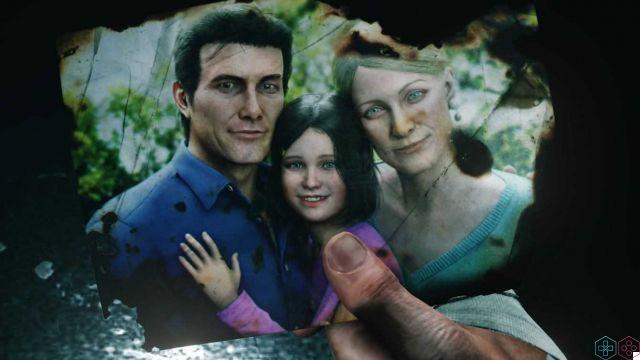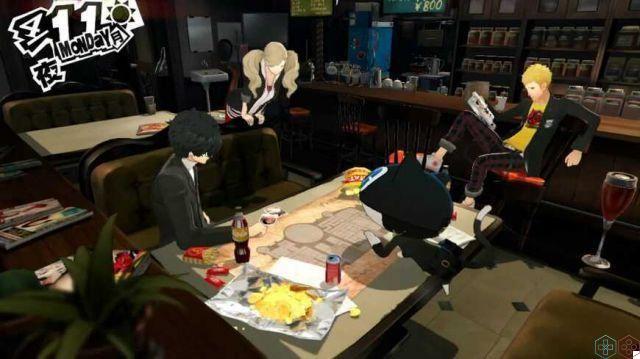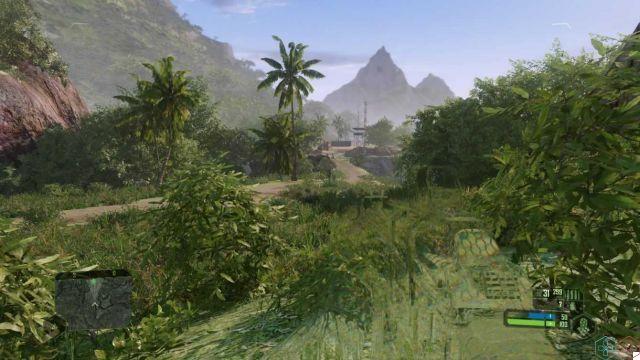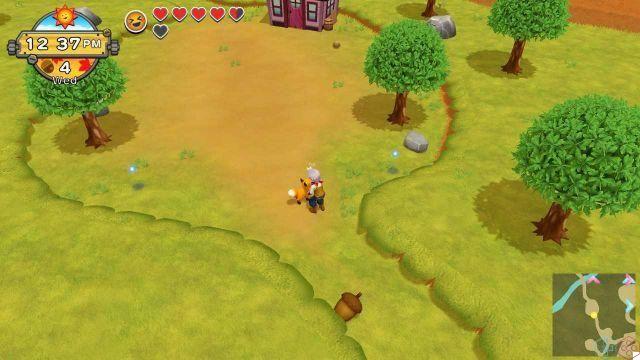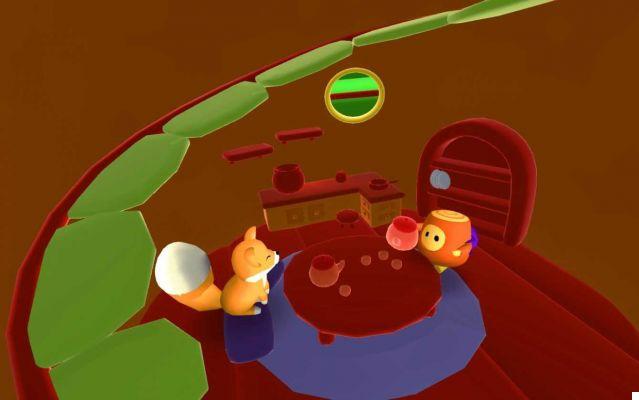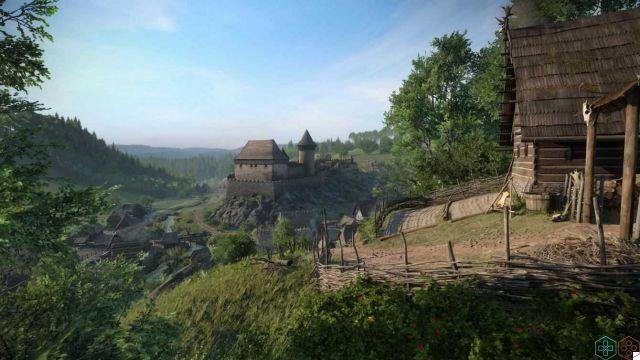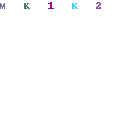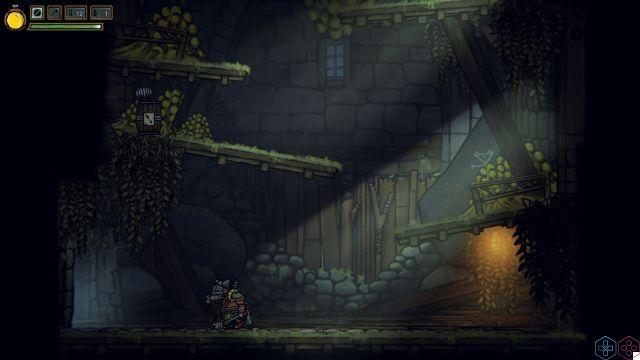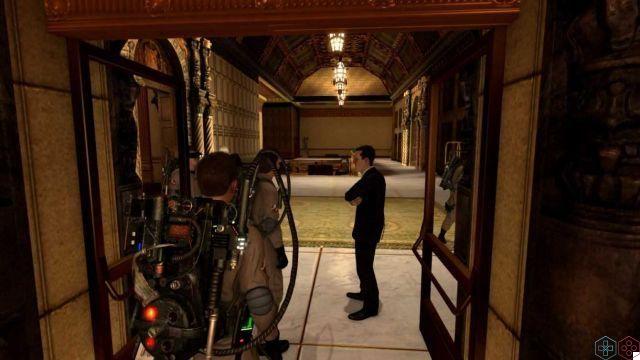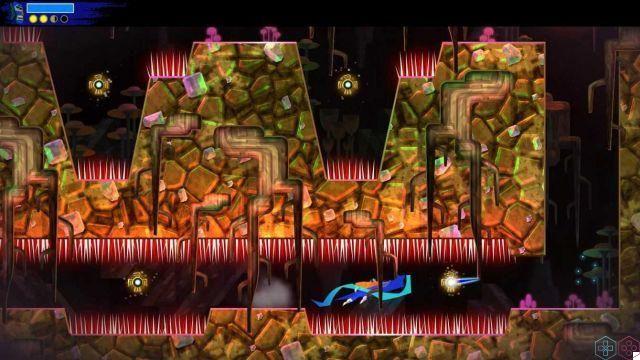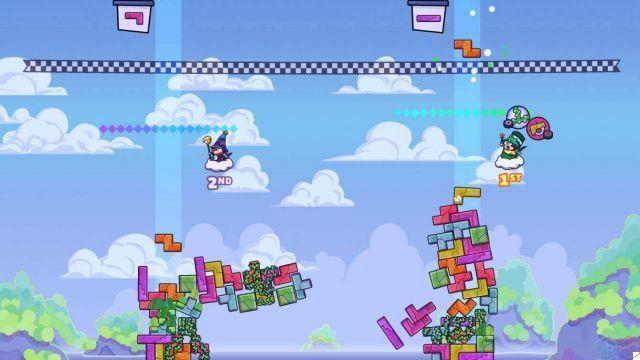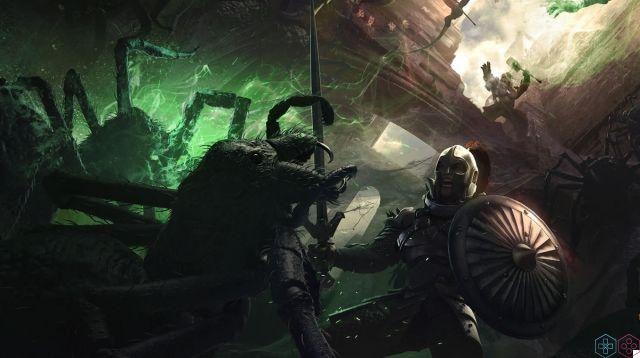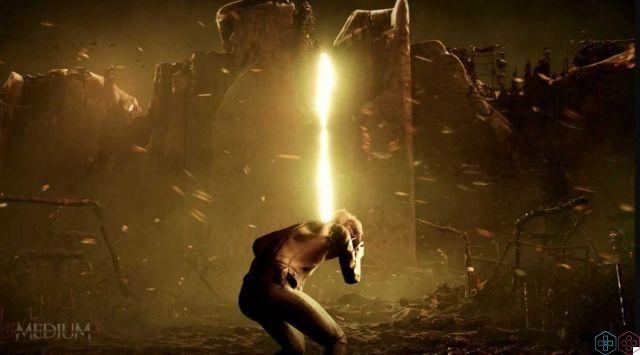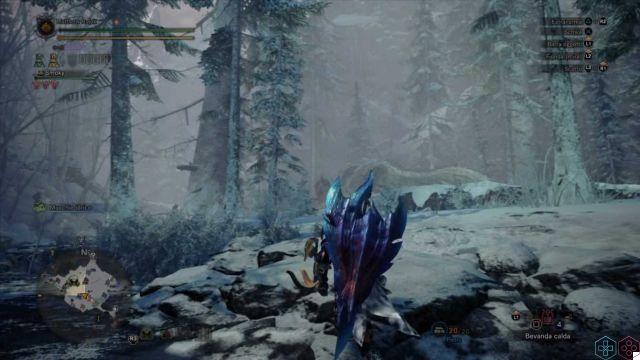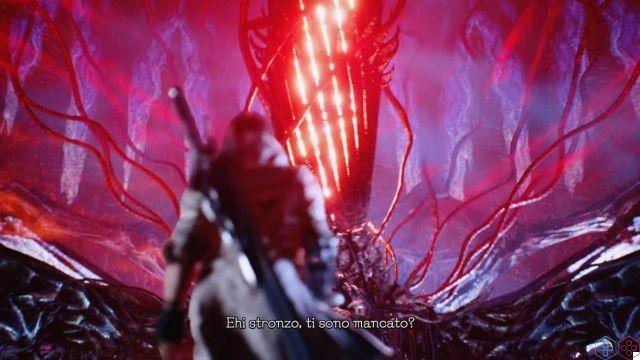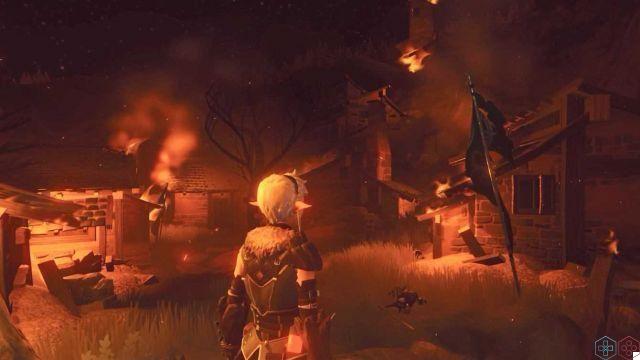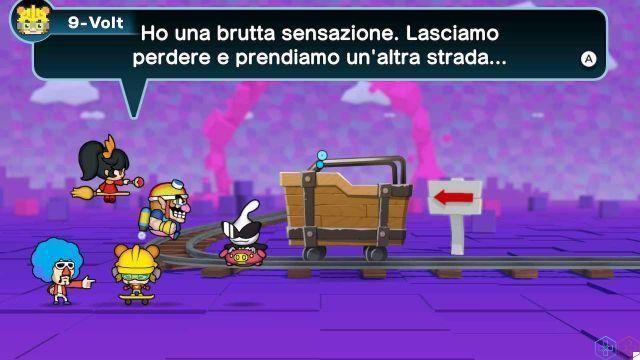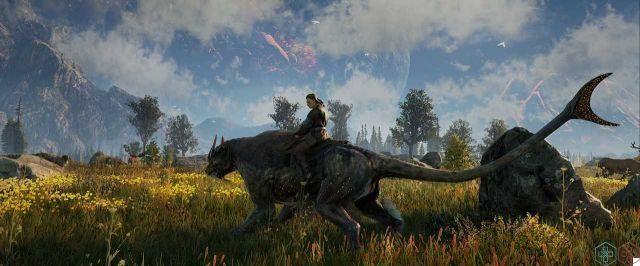Wine is love, tradition, beauty. Reproducing the art of making wine in a video game was certainly a very original idea by General Interactive Co. The team has in fact proposed to the public its Terroir, a wine tycoon simulator
This review refers to the version 2.0 of the game: having tried the previous versions of the title I can see with pleasure that the team has made efforts to introduce some elements and fix others. Additionally, although the game is exclusively available in English language don't worry: with a dictionary at your fingertips, it won't be difficult to juggle.
A Chalice
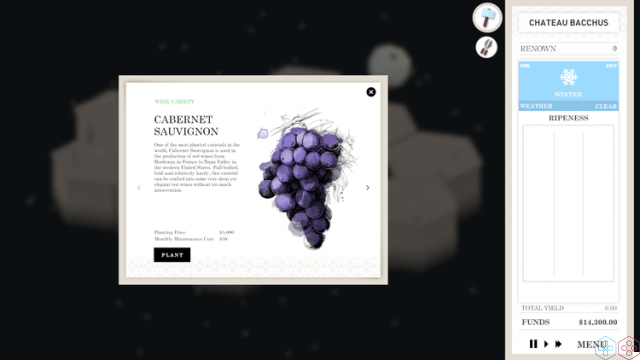
I am a wine lover and, honestly, in Terroir I was hoping to be able to simulate my hypothetical cellar, capable of excelling in the quality of Chardonnay, the variety of wine I love most. Instead, for my sin of habitually consuming poor quality alcohol during my college nights, I was punished with a game that drowns me in a red ... of anger.
I am sincerely disappointed because, at a first game, the title developed by General Interactive Co. it looked very promising and interesting. However, at the end of my career as a wine entrepreneur I was left alone with a glass of stringy Caubernet.
Terroir: good the first!
In my first game, I went bankrupt after only ten minutes. Eh, okay, I knew that squandering my money would lead to nothing: I burned my business from the start. Too bad for my three Chardonnay soils: I went bankrupt before the harvest, having completely exhausted my reserves.
Luckily I didn't have any employees and I played in easy mode. The title indeed presents three difficulty levels: easy, medium and difficult. As you can imagine, the first mode sees more money and a lower chance that plants will get sick or die. In the medium difficulty, you have less money and, in short, we understand each other.
But let's see how the winemaker is played.
Good the second!
To better understand the game mechanics, I started, even the second time, in easy mode. A well done tutorial will guide us step by step for the first year of activity (in the first run I had silenced the tutorial, sacrificing my reviewer dress in the name of fooling around). It will be very convenient to always be able to consult the tutorial items by clicking on the appropriate icon with the book superimposed.
Let's see together the main characteristics of winemaking in Terroir
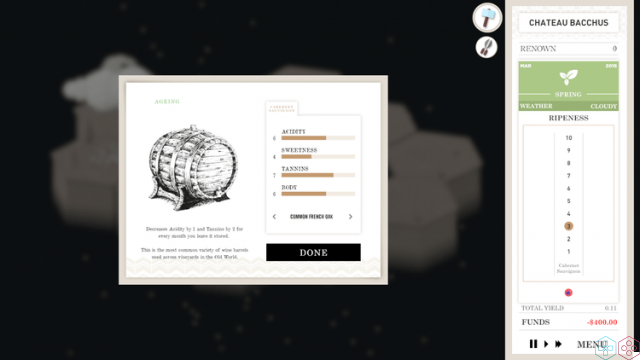
We immediately describe the various phases in which the gameplay. After planting our vines, waiting for the harvest, we can organize our possessions. Furthermore, once the employees' hut has been built, we can have them develop pesticides and other medicines in order to facilitate the success of our harvest. Following the harvest, available from September to November, we will have to harvest. Therefore the three phases of pressing, fermentation and aging will alternate. Finally we will be able to bottle our products. The quality of the crop will be affected by the weather, which we will discuss shortly.
In the three stages of production we will be able to modify the four indexes (which vary within the values from 1 to 10) that designate the wine, in this title: Acidity, Sweetness, Sulphites and Body. If during the year the atmospheric conditions were optimal, we will start from a good point in the pressing phase.
But it is during the entire winemaking process that we will have to "Making good wine", altering the 4 values. We will then have to let the critics taste our product, who will evaluate our wine and assign it a cost. Finally, we will be able to assign the wine to one of the four available sellers.
A nice note about the game is that every wine needs one certain number combination to be good, and Terroir himself invites us to experiment year after year to perfect ourselves and obtain an impeccable product.
Year after year, our goal is to expand the business by becoming a billionaire
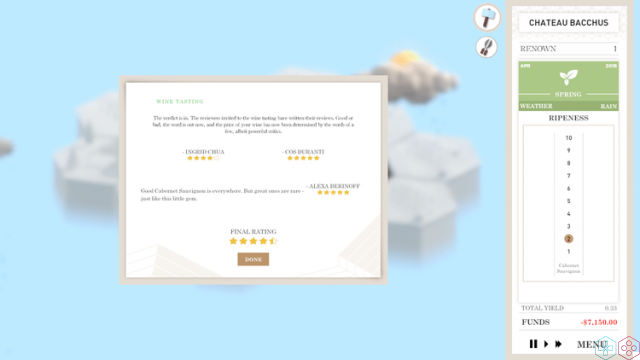
We have the opportunity to achieve a loan from the agricultural bank to finance our business, with a system that I think is right: depending on our fame points, obtainable by selling good wine, we will be able to obtain a maximum loan equal to the sum of these points multiplied by 2.000. The loan will have to be repaid within a maximum of five years, and if we don't afford to, we'll go bankrupt and lose the game.
Unfortunately, our reputation will drop in an instant if we don't have to consistently produce pentastellates. This will affect our eventual game strategy.
The game also comes with a random rewards very interesting: every time we get a five-star wine we will be able to draw a chance or circumstance card, a bit like in Monopoli. You can see that I am lucky in love, because here I have had a black misfortune every time: because of the thieves I have lost a mountain of money. But maybe it will be better for you, in the meantime I make myself a scratch card.
The "active" part is all here, now let's move on to the rest.
Terroir's “infallible” weather
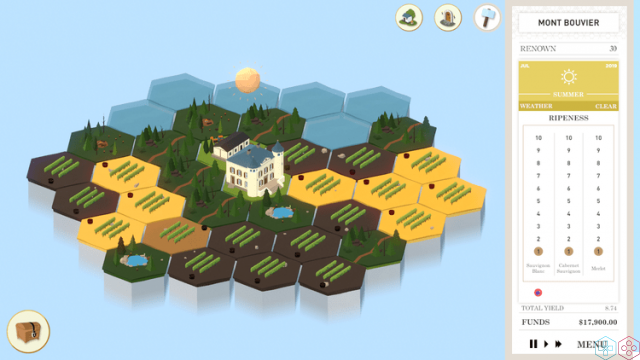
After planting, I waited for a nice bulletin weather made me hope for a good harvest. But instead I found with pleasure that the weather is generated randomly, month after month: you can have a good harvest or a bad one without having any active role. Obviously not considering the care of the vineyards in the strict sense: obviously applying medicines and pruning will often not be able to avoid a catastrophe.
Exposure to light (ripeness) must fall within the 4-6 range to be optimal: if they are overexposed to the sun or rain, you will always get an apparently undrinkable liquid.
So, in Terroir we will play using a classic isometric visual with various hexagonal panels which can contain three types of game elements. We exclude the central hexagon where our cellar is located, that is a mini mountain chalet that magically has all the enormous machinery necessary to press the wine, make it ferment and make it age.
So, we have: the vineyard, ancillary structures e environmental factors. Depending on the soil present, choosing between clayey, sandy and dry, we will be able to plant the 7 varieties of wine available in-game. The ancillary structures are those that allow us to improve the arsenal to be used, such as the employee shed to do research, the tavern and the castle to validate the name of our cellar and make our products cost more. The environmental factors are the lake and the forest, which will allow the adjacent lands to produce more grapes and last longer.
And finally, there are a number of unnecessary trappings to decorate our play environment, such as dressing rooms for employees and deck chairs. And there you are wondering what it is worth spending 100 dollars for a beach dressing room to be placed next to a wine cellar.
But more than accessories, we will have to use our money to unlock "upgrades" to be used during the harvest to better refine the wine. However, these upgrades won't be exactly necessary, and you'll leave more than one behind.
But now let's digress for a moment: have you imagined how all these things could be rendered in a video game? Apart from the dressing room and the deck chairs, you would imagine something with a nostalgic tone, a graphic tone capable of making you almost smell the goodness of your wines.
Minimal graphics yes, but it goes so-so
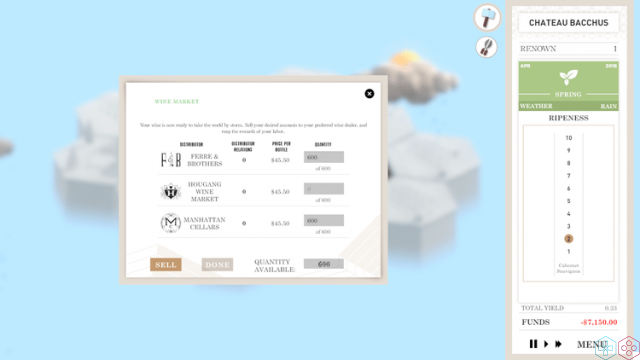
I understand in an indie the need to make the graphics minimal, also in order to make the game lighter and perhaps accessible, as well as why so you can play it anywhere with a computer even not too recent (the minimum specifications speak of a Core 2 Duo 2.4 Ghz), but having the impression of being in front of a mobile game, I honestly turned up my nose a bit.
But I wouldn't have been so bothered if I hadn't experimented various slowdowns during the games. And above all, the fact that the game does not self-adjust the focus of the game windows when zooming, making it almost impossible to play from a close view.
Ah, and speaking of an annoying visual sector, I can only tell you about the sound one. The fx are ok, but the music is two in the whole game and they are boring and soporific: suitable for falling asleep in the fields but not for supporting a match that exceeds five minutes.
Let's scrape the bottom of the barrel of this review
I introduced you to the mechanics of this game and its technical and graphic issues. While I can't say this is actually a bad game, I can't call it good either. Needless to go around it: the many defects of the game will ensure that after a handful of hours you get tired of the title, placing it in the virtual shelf without clicking on its icon.
This game is almost enough, but only because the luck element might also appeal to some. But it is still very interesting to find out more about wines and show off your Sommelier skills acquired with so much sweat (and swearing).
Terroir: scrupulous winegrowers
The game can be saved at any time: save when luck smiles on you and restart the game when chance kills your vineyards.
All that remains is to say… Cin Cin, to yours!
5 Good idea, bad realization!Points in favor
- Original theme and premises
- It stimulates you to find the best alchemy for wines
- Theoretically good mechanics, but ...
Points against
- The weather is completely random
- The variety of the game is limited
- The graphics and sound sector leave something to be desired




